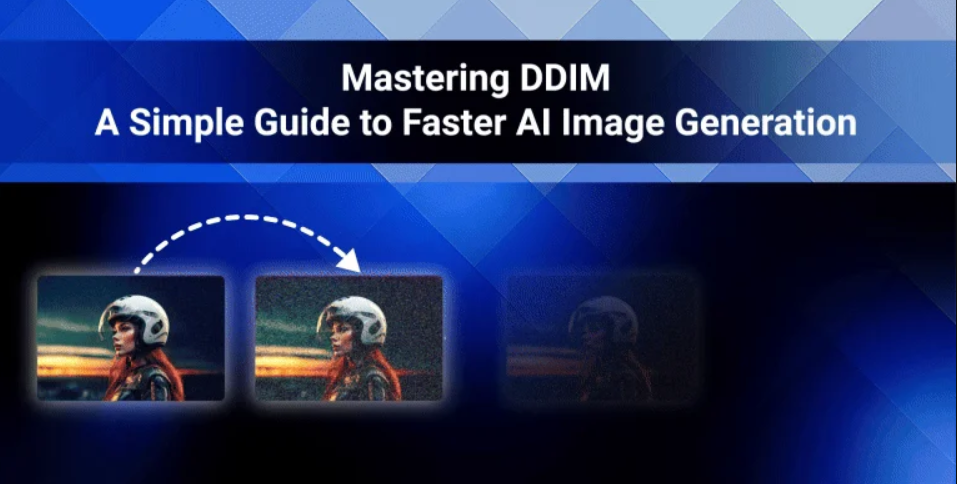Imagine a sculptor who once spent days chiselling a statue, layer by layer, perfecting each curve until the masterpiece finally emerged. Now, imagine if that same sculptor had tools that could reveal the figure within the stone in half the time—without compromising beauty or precision.
This is the promise of sampling speed optimisation in the world of Generative AI. Traditional diffusion models, while powerful, often demand thousands of steps to generate a single coherent image. Techniques like Denoising Diffusion Implicit Models (DDIM) revolutionise this process, allowing creators and machines to achieve similar results with fewer iterations and less computational cost.
Understanding the Diffusion Journey
At its core, a diffusion model works like reverse chaos engineering. The model starts with complete noise and gradually refines it, step by step, into a meaningful output such as an image or sound. Each step adds clarity, much like an artist cleaning a foggy window to reveal the scene outside.
However, this precision comes at a cost. Traditional diffusion models, like DDPMs (Denoising Diffusion Probabilistic Models), can require hundreds or thousands of passes, making the process time-consuming and resource-intensive. This is where optimisation becomes crucial—finding ways to maintain quality while reducing the computational burden.
Professionals aiming to explore these innovations often benefit from structured programmes such as a generative ai course in chennai, where learners gain hands-on experience in understanding how sampling mechanisms evolve and are optimised in real-world systems.
The Leap from DDPM to DDIM
To improve efficiency, researchers developed DDIM—a method that retains the elegance of the diffusion process but reduces the number of steps required. Instead of treating every noise removal as a mandatory step, DDIM introduces a clever shortcut: it uses a deterministic mapping to connect noisy samples directly to their denoised counterparts.
Think of it like skipping redundant brushstrokes in a painting because you already know what the final strokes should look like. DDIM reduces the sampling process from a thousand steps to just a few dozen, cutting generation time dramatically while maintaining nearly identical quality.
This breakthrough doesn’t just speed up image creation; it also paves the way for real-time generative applications—something previously limited by slow processing times.
Balancing Speed and Quality
Speed, while desirable, can’t come at the expense of fidelity. Reducing too many steps may result in incomplete or blurred outputs, much like rushing through a song and missing its melody. The art of optimisation lies in finding that balance between efficiency and accuracy.
Advanced frameworks use adaptive sampling—dynamically adjusting the number of diffusion steps based on complexity. Simpler images or patterns may need fewer iterations, while intricate details require more. This adaptability ensures that quality remains uncompromised, even as systems move toward faster generation cycles.
Students enrolled in a generative AI course in Chennai often experiment with such trade-offs, learning to implement models that optimize both performance and precision—a skill increasingly valued across AI-driven industries.
Real-World Applications of Faster Sampling
The implications of these faster sampling techniques stretch far beyond research labs. In creative industries, shorter generation cycles allow for rapid prototyping—designers can iterate visual concepts in minutes rather than hours. In gaming, real-time world generation becomes possible without heavy pre-processing.
Moreover, in healthcare and drug discovery, where AI-generated molecules are tested for potential cures, faster sampling accelerates the experimental cycle, bringing breakthroughs closer to reality.
DDIM and similar models serve as catalysts for innovation—empowering industries that rely on generative systems to scale ideas at unprecedented speeds.
The Road Ahead: Smarter, Leaner Generation
The next wave of optimisation lies in hybrid models that combine the strengths of diffusion with transformer-based architectures, enabling not only faster but more context-aware generation. Future algorithms may learn to “guess” the most efficient path to the final output, further reducing computational demands.
As models grow more intelligent and efficient, the barrier between creativity and computation continues to dissolve. The focus shifts from how long it takes to generate something to how meaningfully it can be generated.
Conclusion
Just as an artist evolves from sketching line by line to envisioning the full composition in a single glance, the field of Generative AI is evolving toward efficiency and precision through innovations like DDIM.
Sampling speed optimisation represents more than just faster algorithms—it reflects a deeper understanding of how intelligence, both human and artificial, learns to work smarter.
In the journey of AI evolution, the tools are only getting sharper, the steps fewer, and the outcomes richer. The ability to optimise sampling speed is not just a technical achievement—it’s a creative leap forward.

